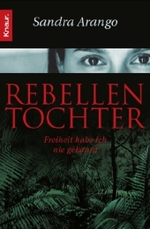- ホーム
- > 洋書
- > 英文書
- > Politics / International Relations
Full Description
The methodologies used to study public opinion are now in flux. The primary polling method of the last half-century, the telephone survey, is rapidly becoming obsolete as a data collection method. At the same time, new methods of contacting potential respondents and obtaining their response are appearing, providing a variety of options for scholars and practitioners. Generally speaking, we are moving from a polling world that was largely interviewer driven over the phone and face-to-face to predominantly interviewer driven self-administered poll environments, New methods of data collection, however, must still deal with fundamental questions to polling methodology and total survey error including sampling, selection bias, non-response error, poststratification weighting, and questionnaire design features.
The Oxford Handbook on Polling and Survey Methods brings together a unique mixture of academics and practitioners, from various backgrounds, academic disciplines, and experiences. In some sense, this is reflective of the interdisciplinary nature of the polling and survey industry: polls and surveys are widely used in academia, government, and the private sector. Designing, implementing, and analyzing high quality, accurate, and cost-effective polls and surveys requires a combination of skills and methodological perspectives. Despite the well-publicized issues that have cropped up in recent political polling, a great deal is known today about how to collect high quality polling and survey data even in complex and difficult environments. Divided into four main sections, the Handbook draws on the existing research and explores data collection methods. It then addresses data analysis and the methods available for combining polling data with other types of data. The next section covers analytic issues, including the new approaches to studying public opinion (ie social media, the analysis of open-ended questions using text analytic tools, and data imputation). The final section focuses on the presentation of polling results, an area where there is a great deal of innovation.
A comprehensive overview of the topic, this volume highlights current polling trends provides ideas for the development of new and better approaches for measuring, modeling, and visualizing public opinion and social behavior.
Contents
Introduction
1. Survey Design
Total Survey Error
Herb Weisberg
Longitudinal Surveys: Issues and Opportunities
Sunshine Hillygus and Steve Snell
The Advantages and Disadvantages of Mode
Lonna Rae Atkeson and Alex Adams
Taking the Study of Political Behavior Online
Stephen Ansolabehere and Brian Shaffner
Sampling for Studying Context: Traditional Surveys and New Directions
James Gimpel
Questionnaire Science
Daniel Oberski
2. Data Collection
Exit Polling Today and What the Future May Hold
Anthony Salvanto
Sampling Hard to Reach Populations: Lessons from Sampling Internally Displaced Persons (IDPs)
Prakash Adkihari and Lisa Bryant
Reaching Beyond Low-Hanging Fruit: Surveying Low-Incidence Populations, Justinlamazoo College
Youssef Chouhound and Jane Junn
Survey Research in the Arab World
Lindsay Benstead
The Language-Opinion Connection
Efren O. Perez
3. Analysis and presentation
Causal Inference with Complex Survey Designs: Generating Population Estimates Using Survey Weights
Ines Levin and Betsy Sinclair
Cross-National Surveys and the Comparative Study of Electoral Systems
Jeffrey A. Karp and Jack Vowles
Aggregating Survey Data to Estimate Subnational Public Opinion
Paul Brace
Public Opinion at the State and Local Level
Chris Warshaw
Using Graphical Displays for Presenting Polling Data and Analytic Results
William Jacoby and Saundra Schneider
Graphical Visualization of Polling Results
Susanna Makela, Yajuan Si, and Andrew Gelman
Measuring Group Consciousness: Actions Speak Louder than Words
Kim Proctor
Issues in Polling Methodologies: Inference and Uncertainty
Jeff Gill and Jonathan Homola
4. New frontiers
Survey Experiments: Managing the Methodological Costs and Benefits
Yanna Krupnikov and Blake Findley
Using Qualitative Methods in a Quantitative Survey Research Agenda
Kinsey Gimbel and Jocelyn Newsome
Integration of Contextual Data: Challenges and Opportunities
Armando Razo
Twitter and Measuring Public Opinion
Jonathan Nagler et al.
Expert Surveys as a Measurement Tool
Cherie Maestas
The Rise of Poll Aggregation and Election Forecasting
Natalie Jackson








